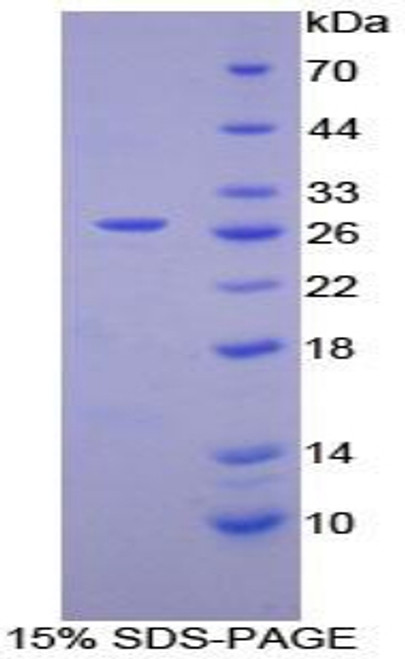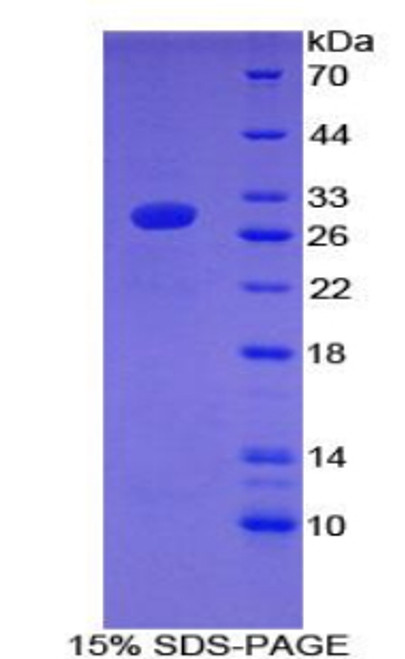Product Description
F12 | Coagulation factor XII | IMS01-137-306 | Agrisera
Immunogen: purified full length native protein UnniProt:P00748
Host: Chicken
Conjugation: N/A
Clonality: Polyclonal
Isotype: N/A
Purity: Purified, total IgY (chicken egg yolk immunoglobulin) in 0.9% NaCl, 0.02% sodium azide.
Format: Liquid
Tested Application: Total, purified IgY
Related Products: IMS01-118-307 | Anti-Coagulation factor VII, chicken antibodiesAS00 001 | Anti-Coagulation factor VIIa, chicken antibodiesIMS01-015-308 | Anti-Coagulation factor VIII, chicken antibodiesSecondary antibodies
Recommended Dilutions: 1: 10 000 (ELISA)
Molecular weight: 67 kDa
Confirmed Reactivity: Human
Predicted Reactivity: Human
Not reactive in: No confirmed exceptions from predicted reactivity are currently known
Additional Information: Detects human coagulation factor XII and XIIa
Background: Coagulation factor XII circulates in blood as a zymogen. This single chain zymogen is converted to a two chain serine protease with an heavy chain (alpha factor XIIa) and a light chain. The heavy chain contains two fibronectin type domains, two epidermal growth factor (EGF) like domains, a kringle domain and a proline rich domain, whereas the light chain contains only a catalytic domain. On activation, further cleavages takes place in the heavy chain, resulting in the production of beta factor XIIa light chain and the alpha factor XIIa light chain becomes beta factor XIIa heavy chain. Prekallikrein is cleaved by factor XII to form kallikrein, which then cleaves factor XII first to alpha factor XIIa and then to beta factor XIIa. The active factor XIIa participates in the initiation of blood coagulation, fibrinolysis, and the generation of bradykinin and angiotensin. It activates coagulation factors VII and XI. Defects in Factor XII gene do not cause any apparent clinical symptoms and the sole effect is that whole blood clotting time is prolonged.
Reconstitution: N/A
Storage: Store at 4°C; make aliquots to avoid working with a stock. Please remember to spin the tubes briefly prior to opening them to avoid any losses that might occur from material adhering to the cap or sides of the tube.
TAIR Nnumbre: N/A
Category: Immunology
Research Area: Immunology
 Euro
Euro
 USD
USD
 British Pound
British Pound
 NULL
NULL












